Go the extra mile
Towards a cooler planet
Local food tourism and its environmental benefits
27 April 2025
Global fast-food chains dominate the market, with more than 40,000 McDonald's outlets and around 45,000 Starbucks locations worldwide. This widespread expansion often eclipses traditional dining options, raising concerns about both cultural preservation and the strain placed on natural resources.
Farm-to-table restaurants present a meaningful alternative. Research indicates that they can reduce carbon emissions by up to 57% compared to large, meat-focused chains. By prioritising local sourcing, these establishments cut down on transportation and packaging waste while supporting nearby farmers and producers.
Examples such as Peru’s Parwa Community Restaurant highlight the broader benefits. Their profits are reinvested into youth programmes, demonstrating how thoughtful consumption can strengthen local economies and create lasting community impact.
This guide explores how adopting more considered eating habits helps conserve resources and empowers neighbourhoods around the world.

What is local food tourism?
Trying local dishes has become a big reason why people choose where to travel. Culinary tourism is all about enjoying real, authentic meals that are part of a place’s identity. Unlike global chains, it celebrates unique flavours and long-standing traditions.
Local food often tells the story of a region’s history and farming. Ingredients usually come from nearby, which means less need for transport. More than 60% of tourists say a place’s food is a big part of what makes it special.
UNESCO now recognises some food traditions as important parts of cultural heritage. Italy’s Mediterranean diet and Mexico’s traditional cooking are good examples, helping to keep old methods alive for future generations.
Research shows that 67% of travellers now put food experiences at the heart of their trip planning. Tasting regional specialities helps people feel more connected to the culture — and it also gives a boost to small businesses and local producers.
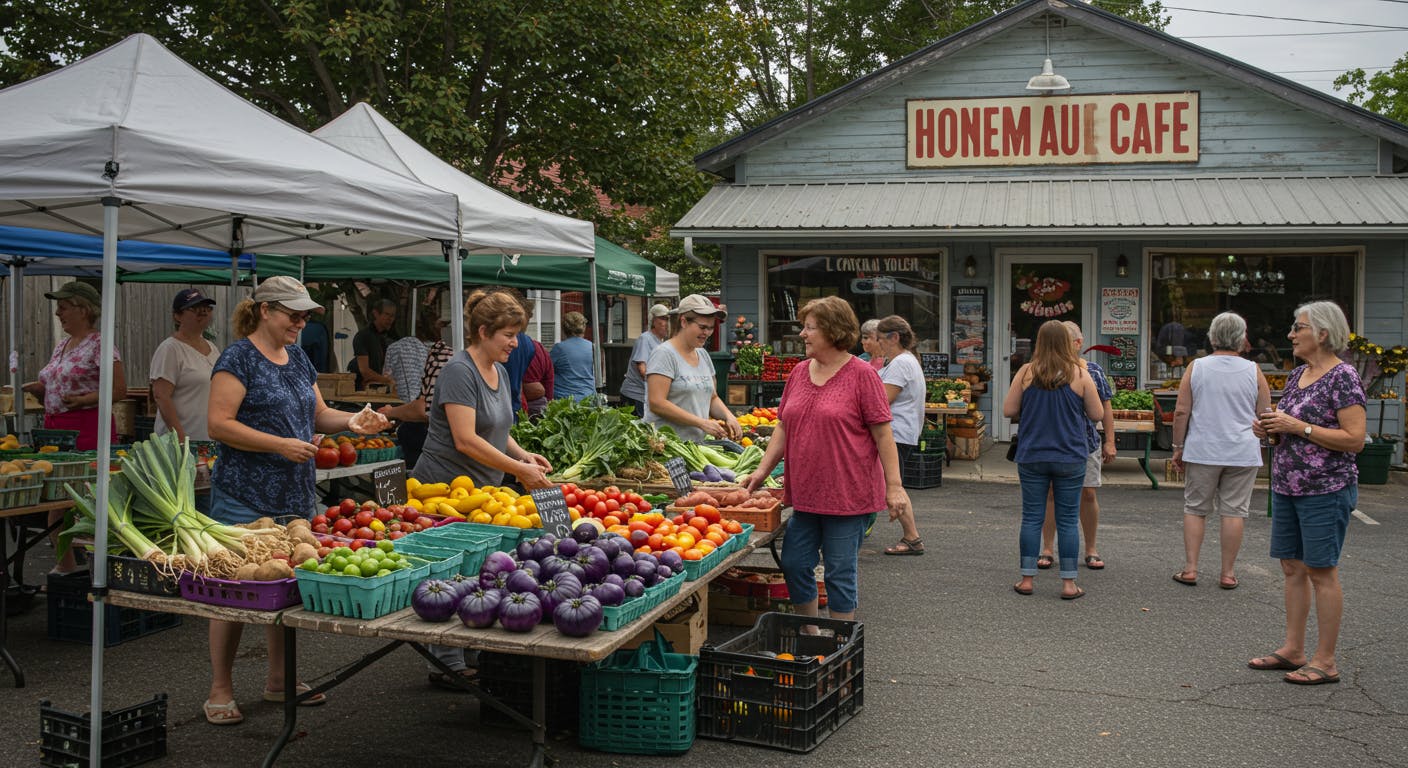
Why local food tourism matters?
Sustainable dining helps cut carbon footprints while supporting the growth of local neighbourhoods. Regional supply chains reduce the need for refrigeration and long-distance transport by around 17% compared to large-scale industrial farming. Shorter journeys mean fresher ingredients and fewer emissions.
Every pound spent at independent restaurants stays in the local economy 3.5 times longer than money spent at large chains. This ripple effect helps fund jobs, schools, and public services — making tourists valuable drivers of lasting change.
Growing demand for traditional dishes also protects heirloom crops and time-honoured farming techniques. Rare varieties like Cherokee Purple tomatoes and Hopi blue corn are finding new markets, helping to keep agricultural diversity alive. Small farms typically use about 30% less water per acre compared to industrial monocultures.
Local food systems offer major advantages:
- Energy savings: Shorter supply chains require less fossil fuel for transport and storage.
- Economic strength: More revenue stays within communities, helping rural areas to thrive.
- Resource protection: A wider variety of crops improves soil health and water retention.
The World Economic Forum notes that regions with strong food sovereignty are better equipped to recover from crises. Prioritising sustainable practices today lays the groundwork for thriving cultures in the future.
How local food tourism benefits communities and the environment
Communities thrive when tourists support local food systems. The Huchuy Qosco group in Peru increased youth employment by 40% through culinary tours. These initiatives create jobs in farming, cooking, and guiding, benefiting the wider community.
Parwa Restaurant in Peru reinvests 100% of its profits into education, demonstrating how tourism dollars stay within a destination. Small-scale producers benefit from reliable markets, helping to reduce urban migration.
Key benefits of local food systems include:
- Job creation: Farm-to-table models generate three times more employment than industrial chains.
- Cultural preservation: Tourist interest helps revive heirloom crops, such as Peru’s 4,000 varieties of potato.
- Waste reduction: Sourcing ingredients within 15 miles cuts packaging and spoilage by 30%.
Studies show that hyper-local sourcing strengthens rural economies. Families are able to earn enough to stay on their ancestral lands, fostering sustainability. Each meal served contributes to this cycle, helping preserve both culture and the environment.
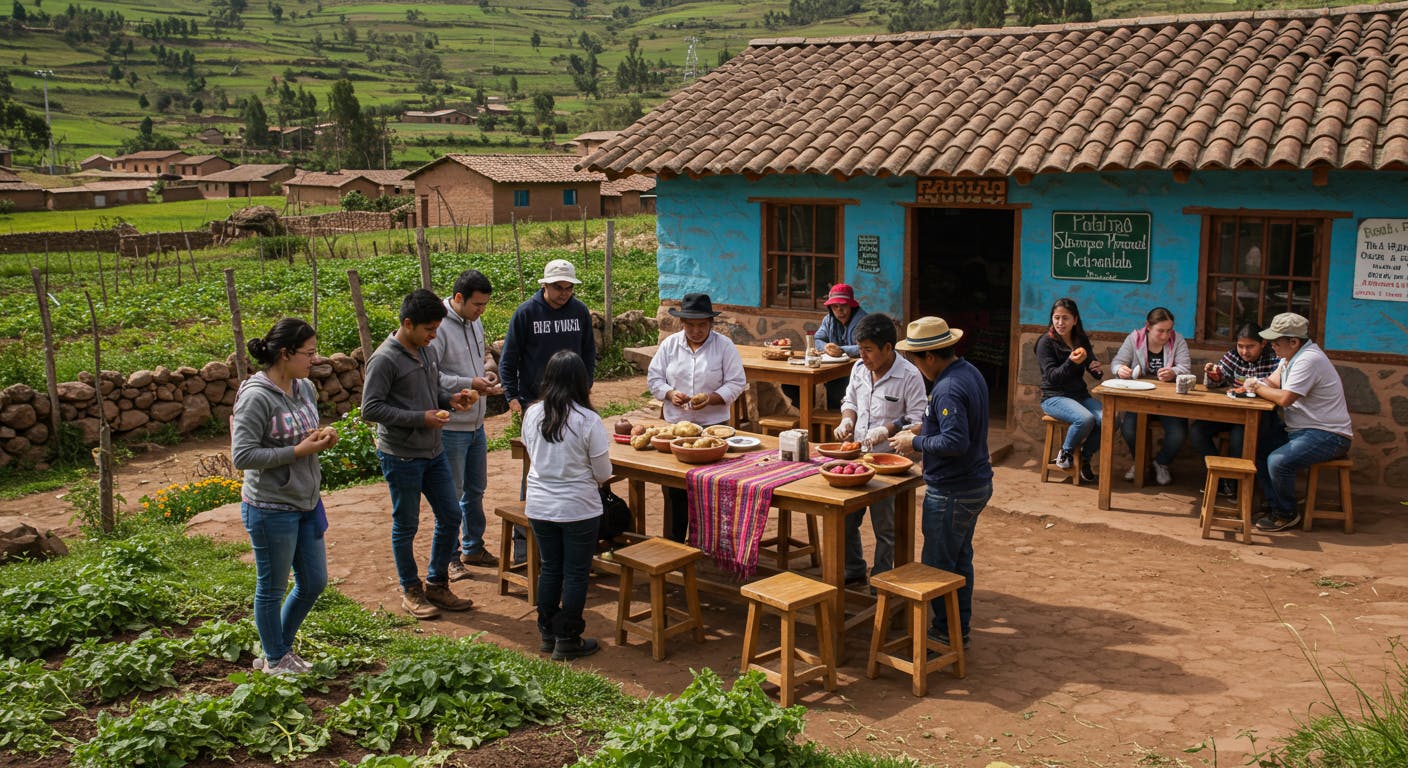
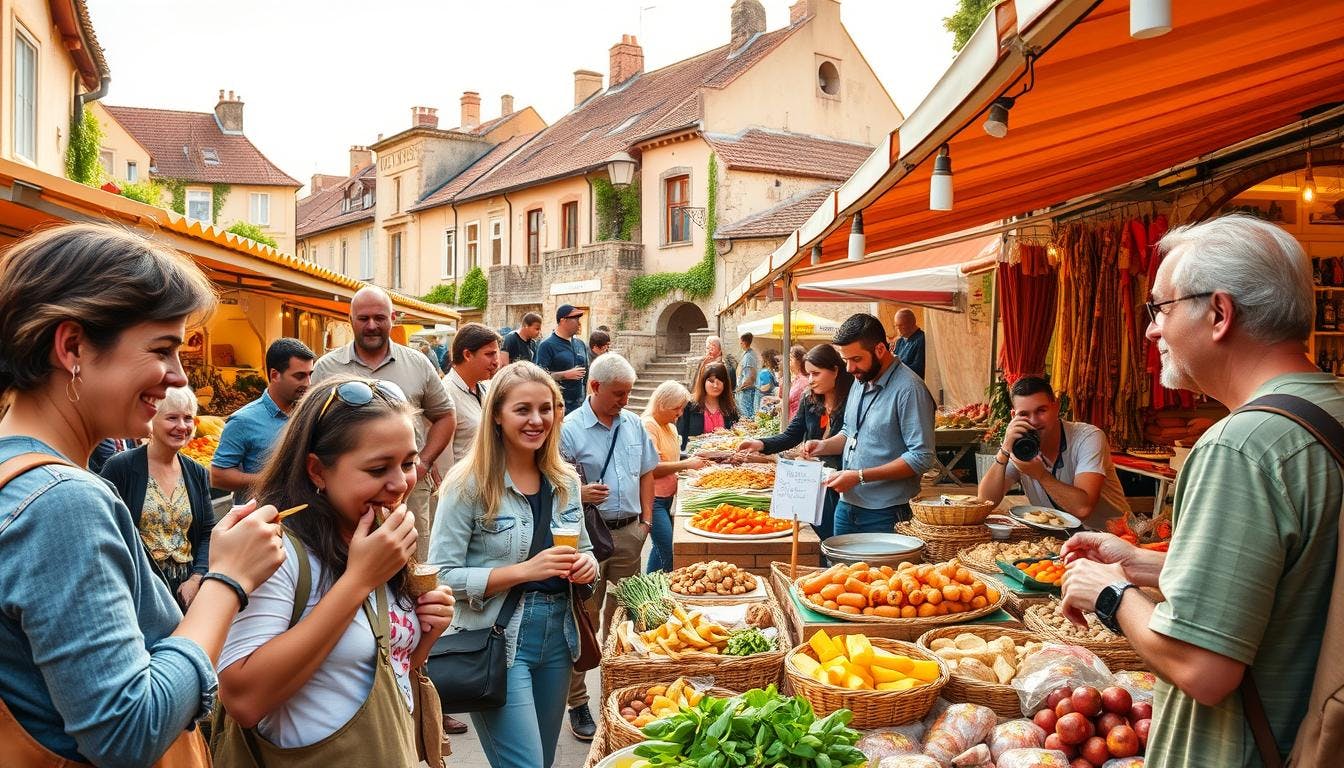
The economic impact of local food tourism
Culinary tourism generates significant revenue for local economies. Studies show that culinary travellers spend 34% more per trip than regular tourists. This influx benefits small businesses and farming communities, providing vital economic support.
Revenue streams include guided tours, cooking classes, and speciality markets. Heritage ingredients, such as heirloom grains, often fetch premium prices, diversifying farmers’ income while helping to preserve rare crops.
The hospitality industry also reaps the rewards. For every 10 jobs in food tourism, seven additional positions are created in transport and retail. USDA data confirms that small farms near tourist destinations have a 22% higher survival rate.
Key benefits include:
- Export growth: Visitors help promote regional products, opening doors to international markets.
- Seasonal spikes: 82% of culinary travellers return for harvest festivals, doubling local earnings.
- Ancillary jobs: Artisans, guides, and other workers gain stable employment during peak seasons.
Tourism-driven awareness transforms niche local products into global exports. Oregon’s marionberry jam and Vermont’s maple syrup now thrive on international markets. This cycle helps strengthen rural economies throughout the year.
Sustainability practices in local food tourism
Restaurants adopting circular models are now reducing waste by 60% through smarter resource management. Zero-mile sourcing ensures ingredients come directly from local farms, while seasonal menu rotations minimise reliance on imported goods.
Closed-loop systems convert food scraps into biogas or fertiliser, cutting landfill waste and lowering energy costs. Over 73% of sustainable venues now use compostable packaging to reduce plastic waste.
Reusable container schemes have shown measurable results, with pilot studies reporting a 45% reduction in single-use plastics. Wood-fired kitchens also outperform electric ones in terms of energy efficiency.
Certifications matter: Labels like Rainforest Alliance and Slow Food Presidia confirm responsible sourcing practices.
Waste-to-resource: Biogas systems not only power kitchens but also help lower methane emissions.
Community collaboration: Farms and restaurants work together to streamline supply chains, ensuring efficiency and quality.
These practices prove that sustainability isn’t just about doing the right thing—it’s also a smart business choice. Every resource saved enhances both profitability and the health of the planet.
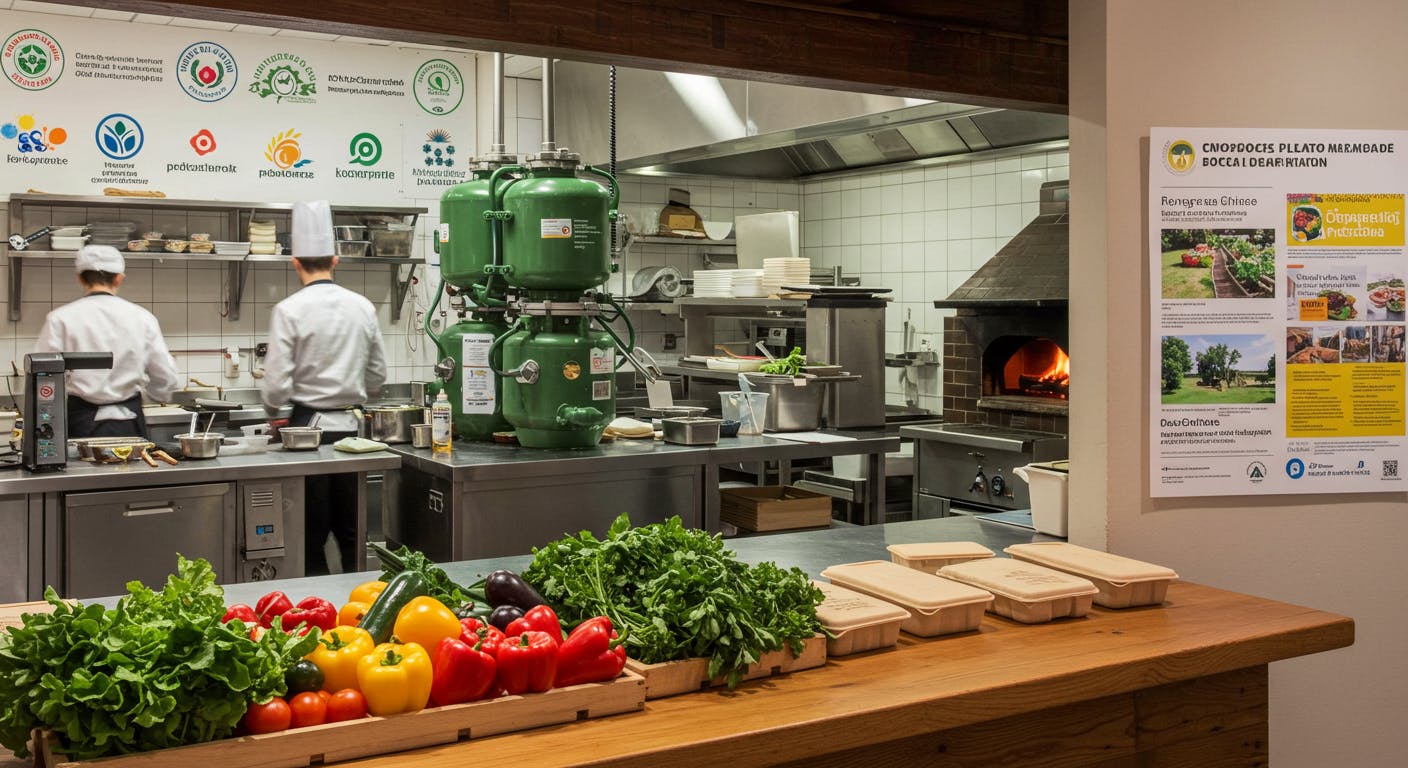
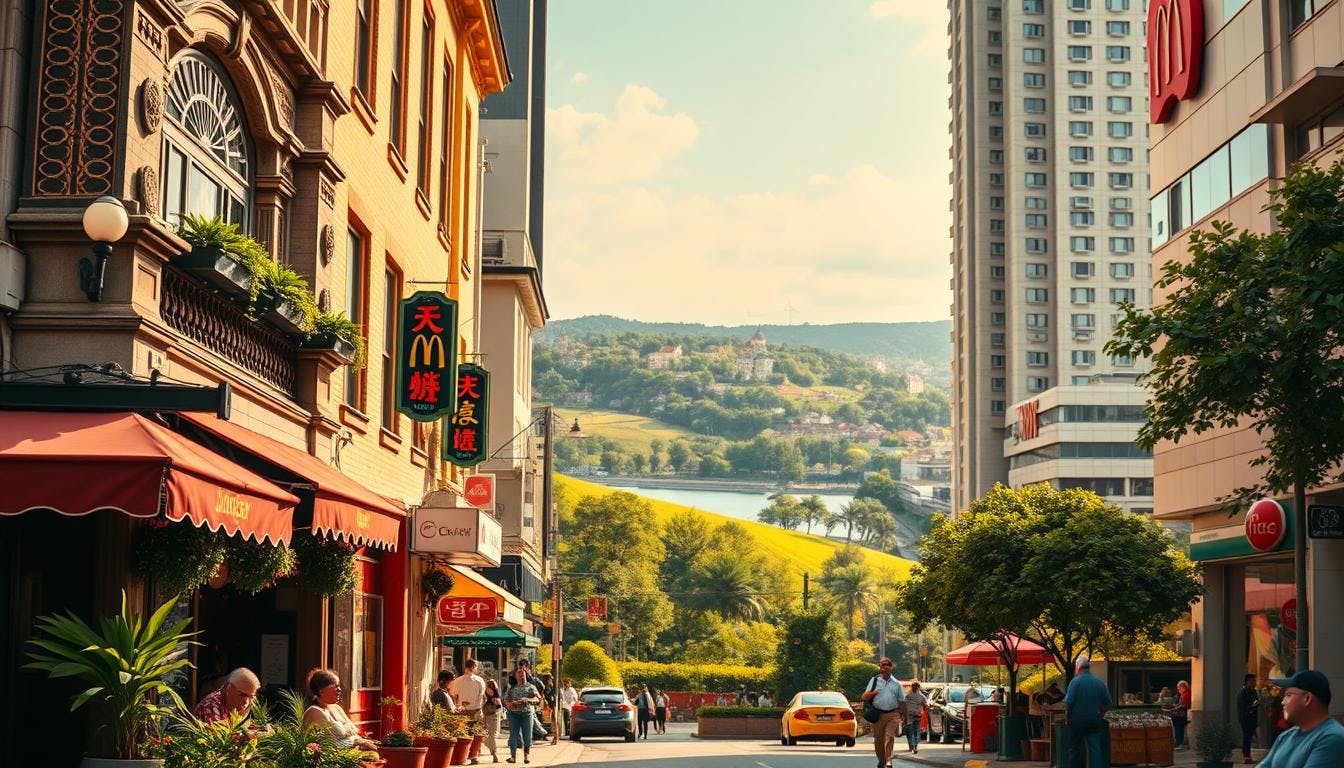
Local food tourism vs. global chains
Industrial food systems differ significantly from community-based dining models. Global chains like McDonald’s produce 2.5kg of CO₂ per meal, which is three times the 0.8kg generated by farm-to-table restaurants. Starbucks’ daily use of 4.5 million disposable cups underscores the stark contrast in waste production.
Resource consumption also varies greatly. Industrial beef production requires 1,800 litres of water per kilogram, while local vegetables need only 250 litres. Furthermore, chain supply systems reduce crop diversity by 78%, favouring uniformity over seasonal produce.
The economic impact is also starkly different. Global chains extract 85% of their profits from the local community, whereas independent restaurants reinvest their revenue locally. This is reflected in tourist satisfaction surveys, with local eateries scoring 4.7/5, compared to just 3.1/5 for global chains.
Key benefits of community-based dining include:
- Carbon efficiency: Shorter supply chains reduce emissions by 68%.
- Cultural preservation: Regional menus protect heritage ingredients and traditional recipes.
- Economic retention: Every £100 spent at local establishments circulates £350 within the community.
These differences clearly highlight how dining choices influence ecological and cultural outcomes. Supporting small-scale restaurants fosters both sustainability and authenticity.
Plant-based and sustainable seafood options
Shifting towards plant-based and sustainable seafood options can significantly reduce ecological footprints. Studies show that these meals generate 58% fewer greenhouse gases than meat-based dishes. Wild-caught fish also require 90% less land than cattle farming, reducing pressure on ecosystems.
According to FAO data, there are notable differences between aquaculture and wild fishing. Responsibly managed fisheries reduce bycatch by 34% compared to industrial fishing methods. Smaller-scale operations also decrease fertiliser runoff, helping prevent harmful algal blooms.
Key benefits include:
- Efficient resource use: Plant-based proteins require 75% less water than beef.
- Community impact: Vegan food trails boost tourist spending by 22% in regions like California.
- Certification guides: The Monterey Bay Aquarium’s Seafood Watch helps consumers identify responsible choices.
These options prove that sustainability and flavour can coexist. From algae-based sushi to heirloom bean stews, innovation enhances tradition. Every meal contributes to healthier oceans and soil.
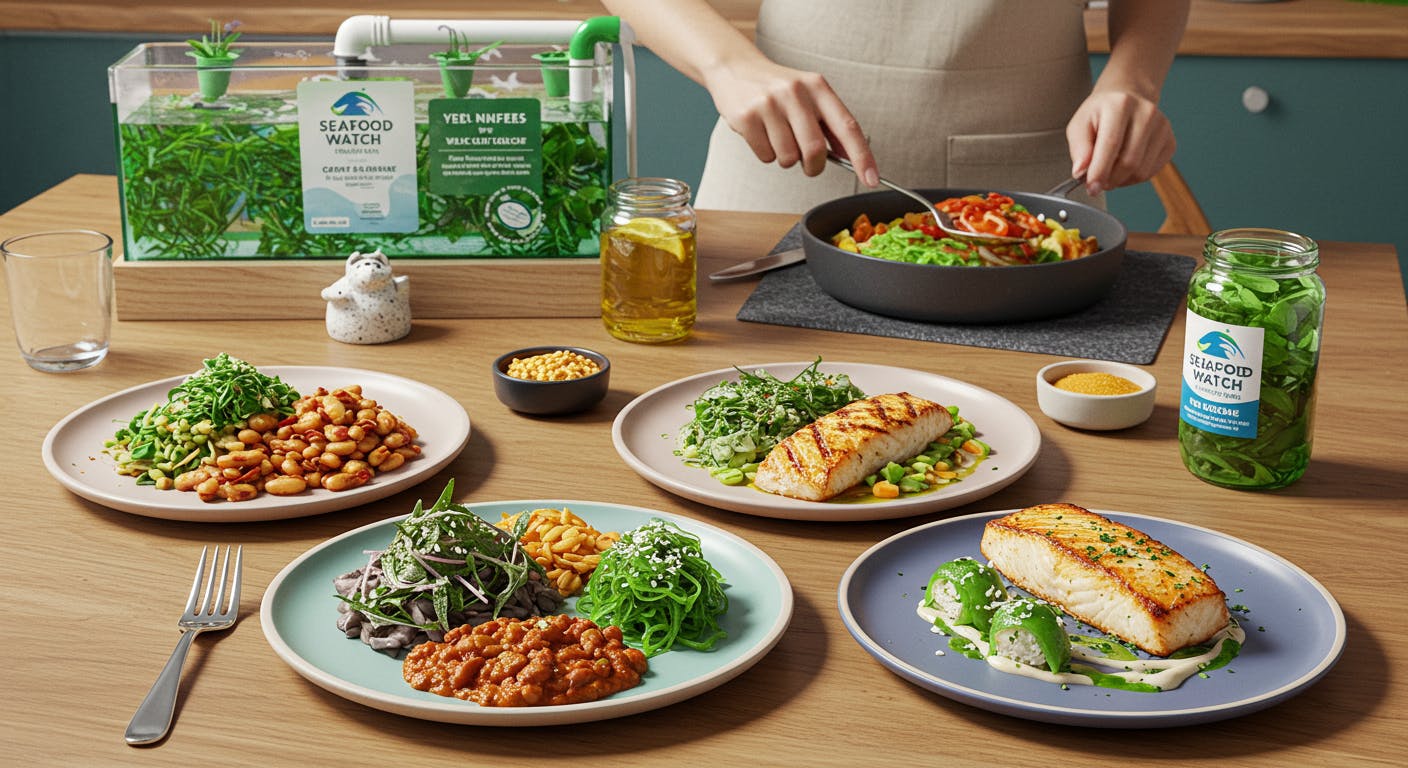
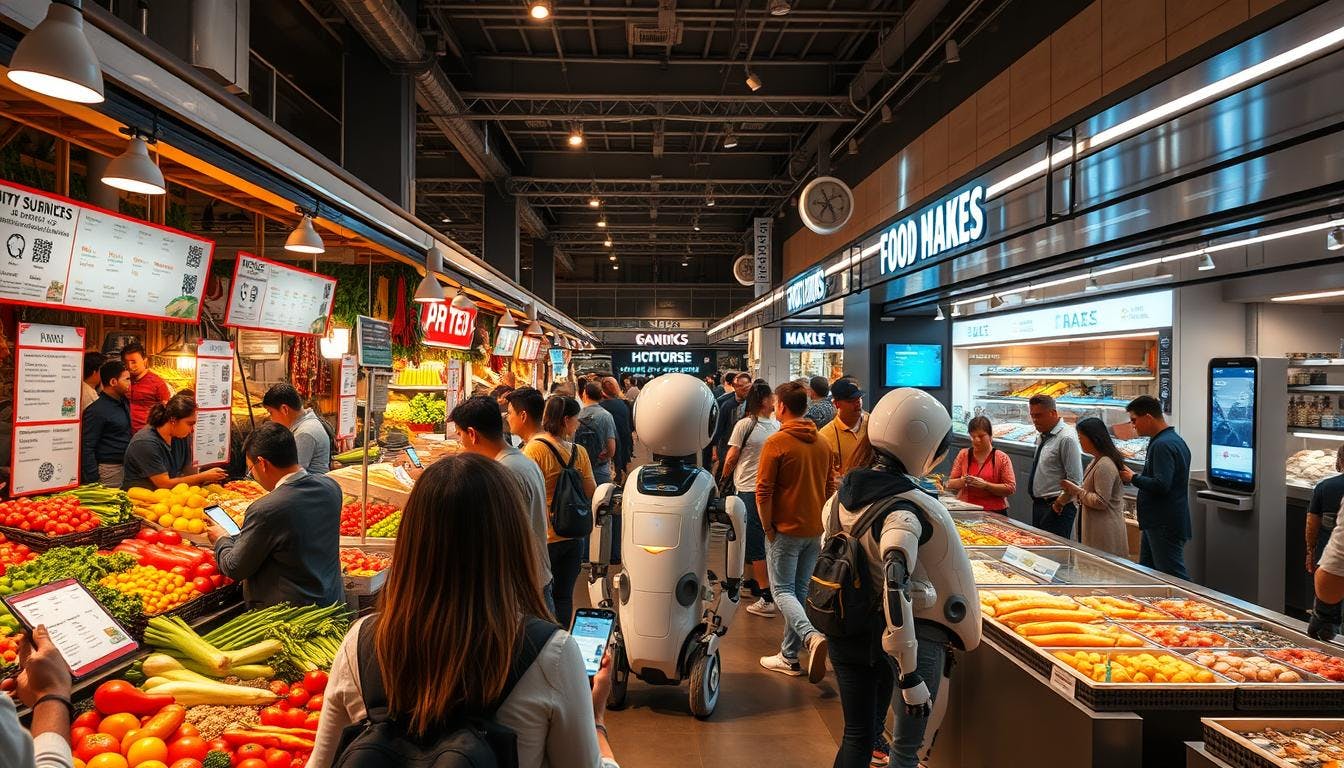
The role of technology in food tourism
Digital tools are increasingly shaping how travellers discover authentic dining experiences. Apps like Eatwith connect 89% of culinary tourists with local chefs, bypassing traditional search methods to showcase hidden gems.
Augmented reality menus have been shown to increase the selection of sustainable dishes by 41%. Diners can visualise meals through their phones before ordering, which reduces food waste and educates guests on sourcing practices.
Geolocated search is bringing small restaurants into the spotlight. Proximity-based results drive 62% more foot traffic to family-run eateries, making them more visible to tourists.
Blockchain technology tracks ingredients from farm to plate. Travellers can scan QR codes to verify organic claims and trace the carbon footprints of their meals.
Instagram trends also play a significant role, influencing 78% of diners' choices. Photogenic regional dishes gain viral status, helping to preserve culinary heritage.
AI technology is optimising menus based on seasonal supply and demand. For instance, Singapore's Street Food Locator app increased vendor sales by 33%. These innovations demonstrate that technology and tradition can thrive together.
Challenges facing local food tourism
Artisanal producers face numerous challenges in preserving culinary heritage. From costly certifications to the threats posed by climate change, systemic issues put traditional practices at risk.
Securing EU Protected Designation status can cost an average of €8,500, which is a significant barrier for small operators. Furthermore, many producers lack digital marketing skills, with 68% unable to effectively promote their products online.
Popular tourist destinations are also experiencing land price inflation. In coastal areas like Spain’s Basque Country, farmland costs have risen by 120% over the past decade. As a result, many farmers are selling to developers, reducing the availability of key ingredients.
Hotels often demand standardised ingredients for consistency, which pressures chefs to abandon regional specialties. For instance, quinoa farmers in Peru have shifted to growing uniform varieties for export, contributing to the decline of local biodiversity.
Climate change is also disrupting crop availability. In Morocco, droughts have caused a 40% drop in argan oil production. UNESCO has listed 12 culinary traditions as endangered, including Georgia’s ancient winemaking techniques.
Key challenges include:
- Certification complexity: Small-scale producers often struggle with the paperwork and associated costs.
- Economic pressures: Rising production costs push artisanal producers towards mass production.
- Ecological shifts: Unpredictable weather patterns threaten heirloom crops.
Globalisation exacerbates these difficulties, and without intervention, the future of authentic flavours could be at risk.


How travellers can support local food tourism
Travellers have a vital role in shaping sustainable dining habits through their everyday choices. Studies show that sharing meals within tourist groups can reduce waste by 37%. Simple changes, such as using reusable containers, can cut plastic usage by 92% during food tours.
To make a positive impact, prioritise authentic venues: look for farmers' markets, family-run eateries, and food cooperatives that are transparent about their sourcing practices.
Be cautious of greenwashing: verify "local" claims by asking for the names of farms and the dates the produce was sourced.
Plan your portions wisely: opt for shared dishes or half-portions to minimise leftovers while enjoying a variety of flavours.
Engage with staff by asking about the origins of ingredients and fair wage policies. This encourages accountability and transparency. Where possible, choose seasonal dishes rather than those made with imported items to support local producers.
Consider visiting off-season to help businesses maintain consistent operations throughout the year. These thoughtful choices create a ripple effect that extends beyond individual meals. Every decision helps preserve culinary heritage while conserving resources.
Policy and advocacy for sustainable food tourism
Governments around the world are introducing policies to encourage more sustainable dining practices. The European Union’s Farm to Fork Strategy allocates €10 billion to support regional food systems, aiming to strengthen small-scale producers and lower supply chain emissions.
Italy’s €200 million food tourism fund demonstrates the success of such initiatives, creating 12,000 jobs while safeguarding culinary heritage. Regions that benefited from these funds recorded an 18% increase in visitor spending.
Education programmes also assist restaurants in adopting more sustainable methods. UNESCO currently protects 38 food traditions as Intangible Cultural Heritage, including Japan’s washoku cuisine and Turkish coffee ceremonies.
France’s Loi EGAlim policy requires that 50% of school meals meet sustainability criteria, which has contributed to a 27% rise in organic farm revenues. Similar policies have been introduced in Sweden and South Korea.
Tax incentives further promote local sourcing: in Oregon, restaurants using more than 50% regional ingredients receive a 15% tax reduction, while California offers grants for establishing composting systems.
Introducing standardised metrics would help producers accurately measure their impact. Proposed guidelines include tracking water usage, food miles, and waste reduction, providing clear benchmarks that make progress easier to assess.
Saudi Arabia’s calorie labelling law has led to a 29% rise in healthier choices among diners. These examples show that well-designed legislation can successfully align consumer preferences with producer capabilities, delivering meaningful results.
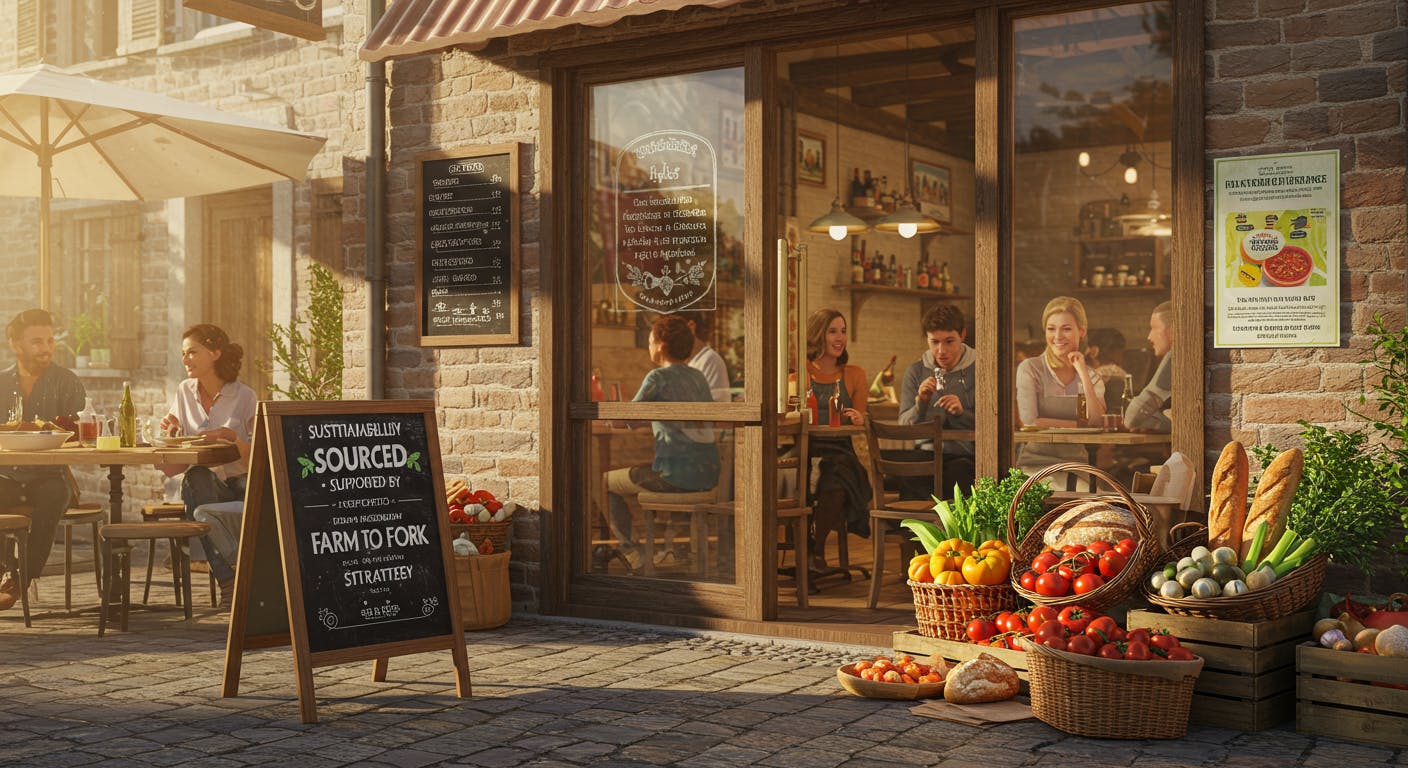
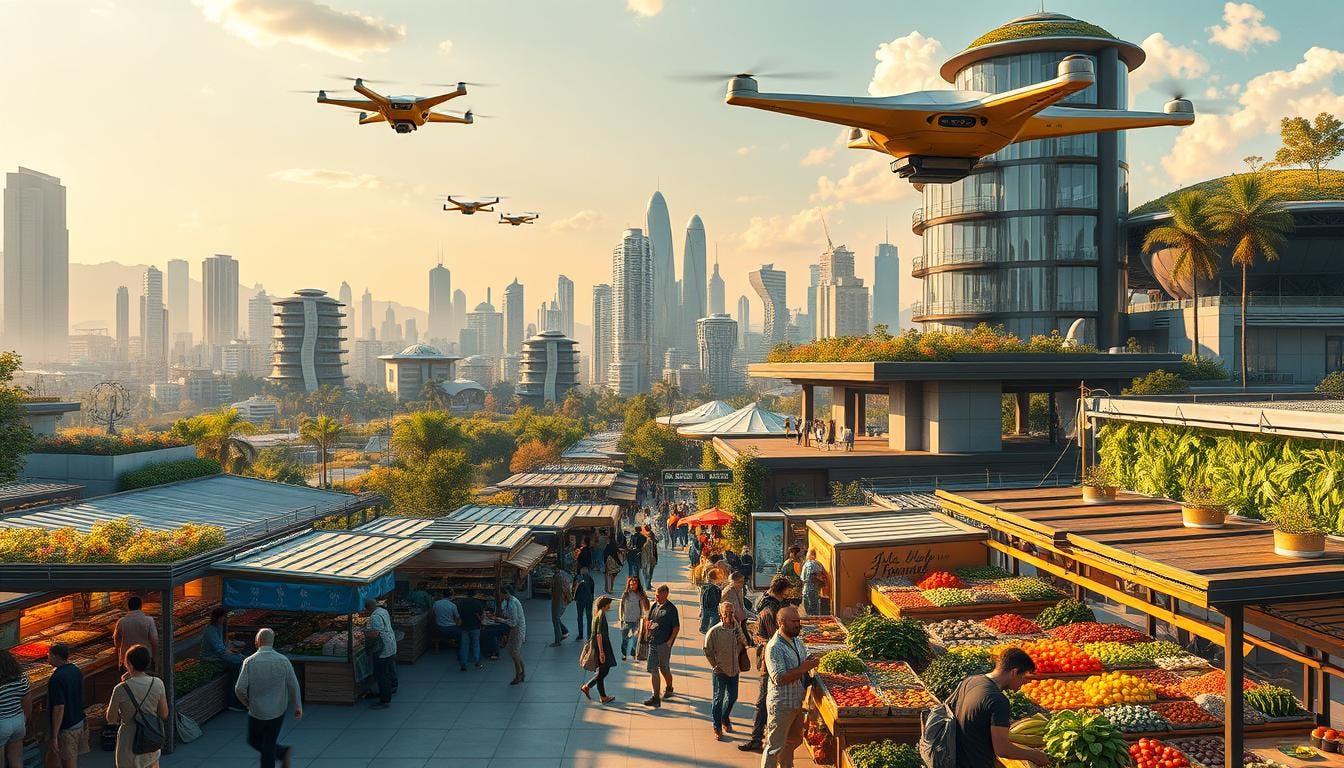
The future of local food tourism
Emerging technologies are transforming the way people engage with regional cuisines. The virtual food tours market is growing at an annual rate of 18.6%, reflecting a rising demand for immersive dining experiences. Millennials are at the forefront of this shift, with 74% prioritising responsible dining choices when they travel.
Carbon-conscious certifications: Restaurants will soon display the carbon footprints of individual dishes, catering to diners who are increasingly mindful of their environmental impact.
Cultivated heritage meats: Lab-grown proteins could replicate traditional flavours without the emissions associated with livestock farming.
Drone delivery systems: Remote communities could share their culinary heritage through airborne transport of local ingredients.
3D food printing: This technology could help revive lost recipes by allowing chefs to input historical data and recreate dishes with precision. Blockchain will further standardise traceability, enabling travellers to verify ingredient sourcing with a simple scan.
These innovations merge tradition with modern progress, ensuring that culinary heritage is preserved while also reducing resource consumption. The future is one of transparency, technological advancement, and exceptional taste.
Making every bite count for the planet
Small daily choices play a crucial role in shaping our collective environmental impact. Research indicates that tourist dining habits could help reduce global emissions by 12% by 2030. Over 80% of travellers now seek carbon labels to make more informed decisions about their food.
Key actions that drive meaningful change include:
- Choosing seasonal ingredients to reduce transportation emissions
- Supporting restaurants with verified sustainability certifications
- Using tools like the Sustainable Restaurant Association’s emissions calculator
Preserving resources today ensures that future generations inherit thriving food systems. Organisations such as FoodTank provide guides for conscious consumption, helping individuals make thoughtful dining choices. Every meal presents an opportunity to protect ecosystems.
Start today: track your dining impact and share your progress. Together, these steps contribute to lasting, positive change.
17 South Street
Auckland 1010
New Zealand
info@carbonclick.com- -
- X
Sign up. Be inspired. Get clicking.
Subscribe now to stay up to date with CarbonClick, carbon offsetting and climate action.
By signing up you agree to our Privacy Policy.


